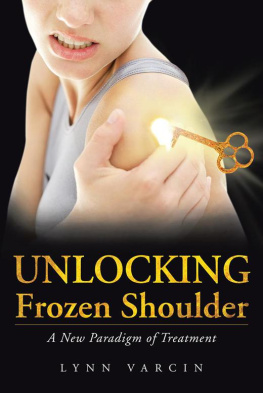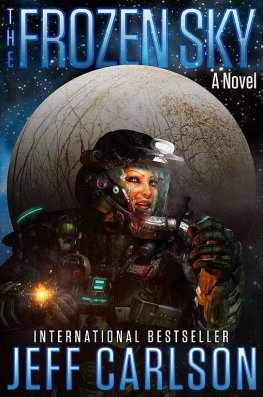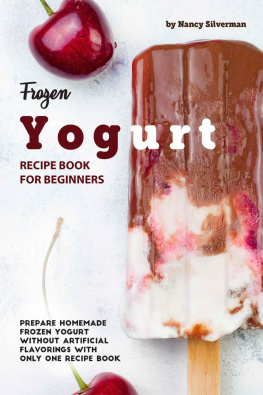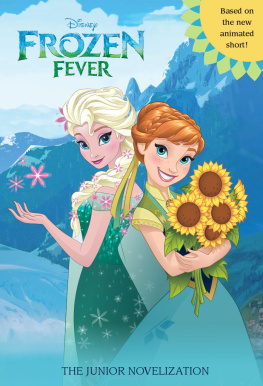UNLOCKING
Frozen Shoulder
A New Paradigm of Treatment
Lynn Varcin

Copyright 2013 Lynn Varcin trading as TerapiCare pty ltd
All rights reserved. No part of this book may be used or reproduced by any means, graphic, electronic, or mechanical, including photocopying, recording, taping or by any information storage retrieval system without the written permission of the publisher except in the case of brief quotations embodied in critical articles and reviews.
Art Credit: Peter Letts & John Daryl D. Obera, RN
Balboa Press books may be ordered through booksellers or by contacting:
Balboa Press
A Division of Hay House
1663 Liberty Drive
Bloomington, IN 47403
www.balboapress.com.au
1-(877) 407-4847
ISBN: 978-1-4525-1072-9 (sc)
ISBN: 978-1-4525-1073-6 (e)
Because of the dynamic nature of the Internet, any web addresses or links contained in this book may have changed since publication and may no longer be valid. The views expressed in this work are solely those of the author and do not necessarily reflect the views of the publisher, and the publisher hereby disclaims any responsibility for them.
The information, ideas, and suggestions in this book are not intended as a substitute for professional medical advice. Before following any suggestions contained in this book, you should consult your personal physician. Neither the author nor the publisher shall be liable or responsible for any loss or damage allegedly arising as a consequence of your use or application of any information or suggestions in this book.
A fear of being sued is associated with the trend in our society to overzealously look to place blame on others. This book is the antithesis of that; it is about looking inside yourself to help your own pain and stiffness. It is more than just a matter of being positive, as it involves beginning movements yourself at home.
There are precautions specific to exercise, particularly for readers with joint problems or joint replacements. Read diligently and exercise softly; it is all about self-healing and not harm.
Any people depicted in stock imagery provided by Thinkstock are models, and such images are being used for illustrative purposes only.
Certain stock imagery Thinkstock.
Balboa Press rev. date: 09/25/2013
Contents
The Story of a Lake
A Parable
Dedicated to all those who care more.
When you open a receptor, ensure love is the energy that sustains.
In addition to holding qualifications in physiotherapy and ergonomics from the Universities of Sydney and Queensland (Australia), Lynn Varcin has completed post-graduate master studies in philosophy and metaphysics. She is also a trained Therapeutic Touch TM and Feldenkrais TM Practitioner. She has extensive professional experience in both the public and private sectors. When Lynn herself began to suffer from frozen shoulder, she initially took a traditional scientific approach to treatment, addressing only the physical aspects of the condition. However, as the disorder progressed from one shoulder to the next, Lynn became aware that emotional factors contributed to the condition. Based on this recognition she began to wonder if empathy and willingness to hear stories from her own clients [talking about their emotional and social trauma(s)] naturally aided their recovery more than she had previously comprehended. Out of these personal and professional experiences and observations Lynn developed the holistic theory and approach presented in Unlocking Frozen Shoulder: A new paradigm in treatment. This became a journey through hormonal disbalance with adhesive capsulitis, and inadvertently finding a probable cause of primary frozen shoulder. Lynn lives in Byron Bay, Australia. Her work in Indigenous Healthcare continues as a physiotherapist but her passion remains in promoting life coaching actions for internal healing practices in difficult to diagnose and treat conditions. Exercises in the book vary from traditional approaches and as such set her aside from most therapists prescribing stretching and pendular shoulder exercises.
The Story of a Lake
A Parable
There once was a strong stream that fed a beautiful lake. The lakes owner loved to stand on its shore and enjoy its beauty. Five tributaries supported the stream. One day, mud was stirred up in one of the tributaries. The other tributaries worked hard to cleanse the stream before it could contaminate the waters of the lake, because those waters were precious, irreplaceableexcept, of course, by God.
Yet the muddied tributary continued to work itself into a mess; unable to calm the turbulent mud, in its distress it pumped up even more. The stream itself resisted the mud and changed directions, affecting the surrounding shore. The owner stood on the shore and gazed across the lake, unaware of the numerous small chain reactions occurring beneath the surface.
Now the mud began backing up into another tributary. There was no back-flow valve, and the mud was soon spreading the length of the second tributary.
The lake settled into its new situation, adapting quickly, breeding chains of chemicals to prevent pollution, but the original tributary continued to feed mud into the stream, which began to dry out. Its flow was no longer alterable. The second tributary, damaged upstream, began to slow more and more. Hard physical activity was needed to clean that stream, but the owner, stunned by the sudden and unexpected changes in the lake, could only stand by helplessly. A third tributary started to act in a preventive capacity, but the water rate had now slowed to a trickle.
The lake adapted again, reacting well to the new input. The owner stood on the shore, dreaming of all five tributaries functioning well again soon. But now one tributary had frozen, and farther upstream harm continued, unnoticed by the owner who could only feel the freeze.
CHAPTER 1
The Frozen Shoulder
Also, all knowledge seems to be teachable, and what is known is learnable.
Aristotle
Frozen shoulder is also called adhesive capsulitis, capsulitis, and primary or secondary frozen shoulder. It normally takes two years to heal. The term itis means inflammation; capsule is the name of the tissue involvedhence capsul-itis . It can affect anyone and has no known cause. The arm becomes extremely painful, and then, often suddenly the movements at the shoulder also begin to tighten, or adhere. This affects your ability to move, turn your forearm, and lift your arm. Frozen shoulder is very debilitating; many physical therapists believe it is one of the most difficult conditions to fix. Few can stop the freezing stage once it has commenced. Worse still is that you may additionally begin to have capsulitis on the opposite shoulder after six to twelve months of the other one repairing itself. So keep reading!
The American Shoulder and Elbow Surgeons define frozen shoulder as a condition of uncertain etiology characterized by significant restriction of both active and passive shoulder motion that occurs in the absence of a known intrinsic shoulder disorder. (Hsu et al., 2010, pp 502)
The arm can ache, or twinge prior to really acute pain. There may be a hot spot in one area of the arm or a tender patches over the joint area. There is usually no recollection of one specific injury that could result in this amount of pain. Tissue takes six weeks to heal, but this injury goes on for months and months, even with appropriate therapeutic interventions. When ignored it progresses to extreme loss of range of movement: the arm cannot be lifted sideways at all. Some women say it is more painful than having a baby, and we should know! Even the neck, shoulder, and back muscles begin to ache in their efforts to compensate for the lack of range. Sleeping is problematic and mood swings common.
Next page









